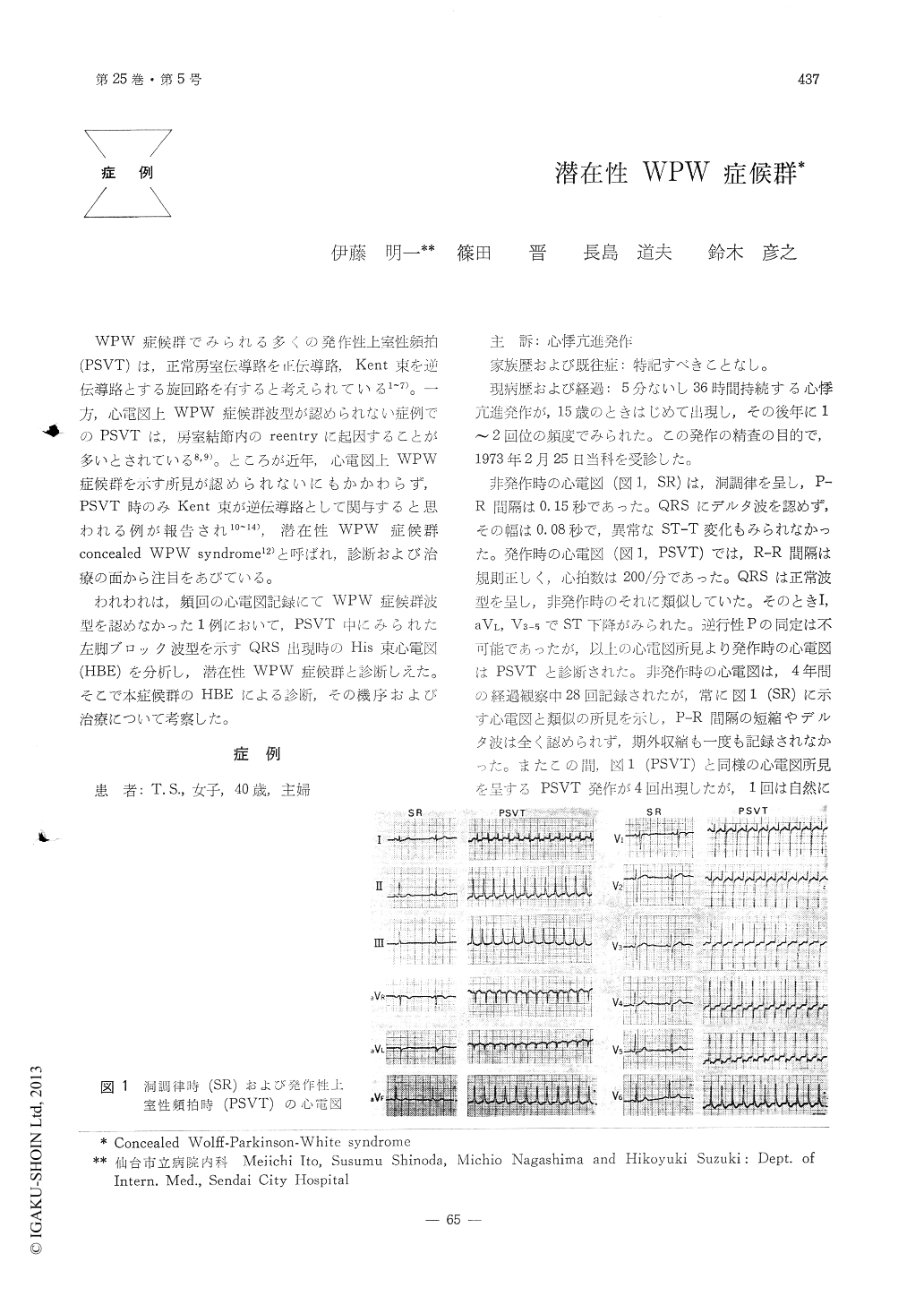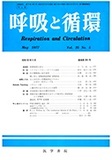Japanese
English
- 有料閲覧
- Abstract 文献概要
- 1ページ目 Look Inside
WPW症候群でみられる多くの発作性上室性頻拍(PSVT)は,正常房室伝導路を正伝導路,Kent束を逆伝導路とする旋回路を有すると考えられている1〜7)。一方,心電図上WPW症候群波型が認められない症例でのPSVTは,房室結節内のreentryに起因することが多いとされている8,9)。ところが近年,心電図上WPW症候群を示す所見が認められないにもかかわらず,PSVT時のみKent束が逆伝導路として関与すると思われる例が報告され10〜14),潜在性WPW症候群concealed WPW syndrome12)と呼ばれ,診断および治療の面から注目をあびている。
われわれは,頻回の心電図記録にてWPW症候群波型を認めなかった1例において,PSVT中にみられた左脚ブロック波型を示すQRS出現時のHis束心電図(HBE)を分析し,潜在性WPW症候群と診断しえた。そこで本症候群のHBEによる診断,その機序および治療について考察した。
A 40-year-old female with recurrent paroxysmal supraventricular tachycardia (PSVT) was studied electrophysiologically. The electrocardiogram (ECG) between attacks showed P-R interval of 0.15 sec and QRS duration of 0.08 sec. During episodes of PSVT, ECG revealed narrow QRS complex similar to that of sinus rhythm. No ECG evidence of pre-excitation was seen during our observation for four years.
His bundle electrogram (HBE) was recorded during sinus rhythm.

Copyright © 1977, Igaku-Shoin Ltd. All rights reserved.


